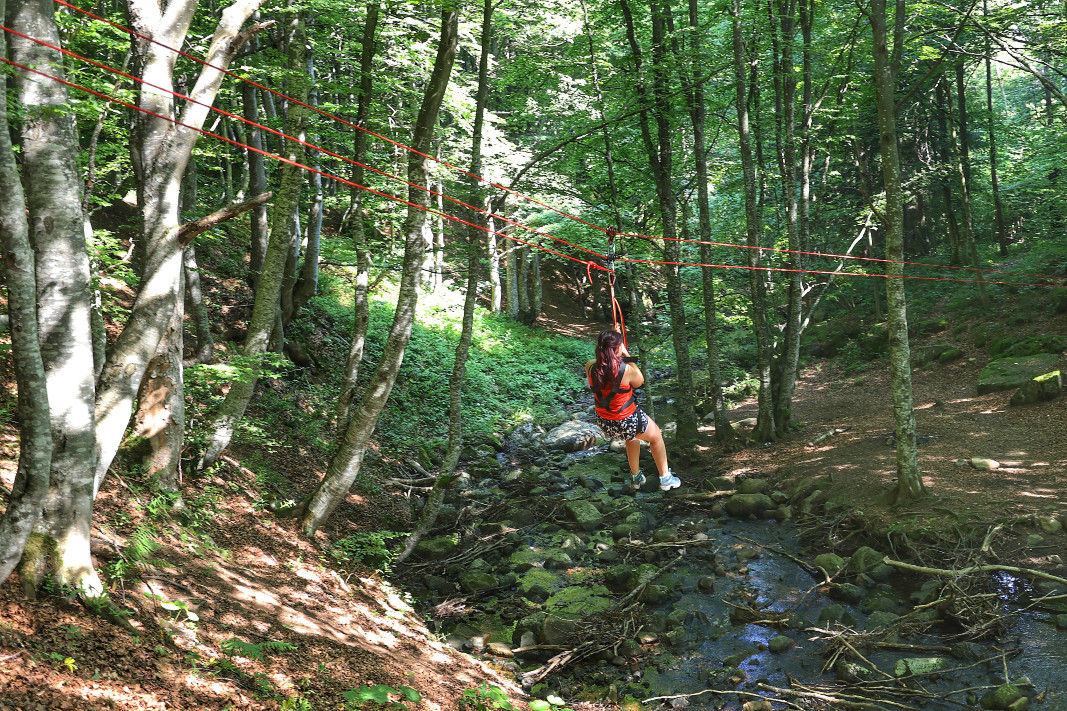Bulgaria's mountain hotels, guesthouses and chalets are enjoying great tourist interest this summer, especially at weekends when it is almost impossible to find vacancies, a Radio Bulgaria check shows. Some lodges are pre-booked until the end of the season. Logically, and in accordance with the law of supply and demand, prices are soaring. A night for two in a modest guesthouse in the mountains averages between BGN 70 and BGN 100 (EUR 35-50), with the recent trend being to rent out the whole house per night at prices starting from BGN 200-300 (EUR 100-150).
Bulgarian mountain resorts offer a wide range of accommodation, with the price depending on the category of hotel, type of meals, availability of spa area, etc., but all this - at a much higher price now.
Young people and families with children from Bulgaria, as well as foreign tourists, are among the most frequent guests of the mountain bases, which are the starting point for hikes in the coolness of the highlands.
"Whether it is Vitosha mountain, Rila, Pirin or Stara Planina, we are looking for altitudes above 1400-1500 m. It is cooler there, there are dense shadows because it is mostly a forest belt - says Petar Stoyanov, hiker and co-chairman of the Bulgarian Mountaineering Union. - July and August are stable months without drastic changes in weather conditions, ideal time to hike the high Rila and Pirin mountains, whether you want to climb the summits or go visit the 7 Rila lakes. If you consider your route carefully and don't overestimate your own physical capabilities, there should be no mountain in our country that will surprise you. But it is very important to prepare well in advance."
A dense network of hiking trails covers most of Bulgaria's mountains. Up-to-date information about them can be found on a website created by a group of hiking enthusiasts. In an interactive map they have mapped about 70% of the marked trails as well as some unmarked trails.
"In Bulgaria we have the advantage of having huts within walking distance of less than a day and not having to spend the night somewhere in the wilderness in a hike between two huts," explains Petar Stoyanov. We have a sufficient hut density on the routes, unlike other countries in Europe.Our ancestors, who used to build huts on a voluntary basis, thought it was nice to have a hut or shelter 6-8 hours away. So if there is no hut, there is a shelter. Over the last 20-30 years, several emergency shelters have been built on some of the busiest routes, such as between the town of Kalofer and Mount Botev (in the Balkan Mountains)."
Tourists from the Netherlands, Belgium, Poland, France and Germany are among the biggest fans of hiking in this country. Most of them are come as individual tourists and organize their own stay in our mountains via the Internet:
"My observations are that foreigners are much more focused and spend more time on their preparation. They study the hard copy maps that are still up to date, they use apps with satellite imagery, they do their research and have no problems getting around in the mountains. The main routes they come for are the international E3, E4 and E8, which are well known in Europe, there is enough information and online applications for them," says Peter Stoyanov in conclusion.
The Yantra River rises in the Balkan Mountains at 1,220 metres above sea level and descends northwards, meandering through picturesque valleys and gorges in central northern Bulgaria, crossing the towns of Gabrovo and Veliko Tarnovo. Shortly before it..
The village of Momchilovtsi, the Rhodopes, Pamporovo and the Smolyan region were present with a pavilion at a tourism exhibition this autumn in Ningbo, China. Speaking to BTA, Momchil Karaivanov, a representative of the Bulgarian-Chinese Society..
Cultural tourism accounts for nearly 20 % of the country’s tourism product, according to data from a survey by the Ministry of Tourism. While Bulgaria's image was previously associated mainly with maritime tourism, which made up 70% of the tourism..

+359 2 9336 661
